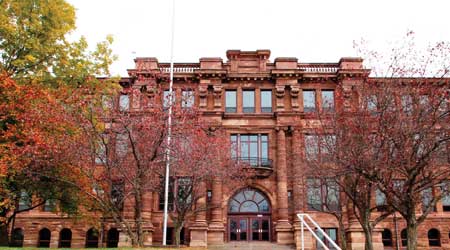 The decision on which schools in the Davenport Community School District received geothermal installations depended on building’s age and the condition of its existing HVAC system.Photo: Davenport Community School District
The decision on which schools in the Davenport Community School District received geothermal installations depended on building’s age and the condition of its existing HVAC system.Photo: Davenport Community School DistrictHead of the Class: Specifying and Installing Geothermal Systems
Davenport Community School District's investment in geothermal technology drives its energy efficiency to the top of the list.
Among the largest investments the Davenport Community School District has made to improve the energy efficiency of its facilities involves replacing aging, poorly performing HVAC systems with geothermal systems, which provide heating in the winter and cooling in the summer.
“In every possible system in addition to HVAC, we’ve made choices based on energy savings,” Maloney says. “Half of the schools have been upgraded to geothermal heating and cooling, and two have solar arrays. Geothermal was selected for the energy savings.
“It began in 2006 when we began adding air conditioning to classrooms for the first time. Wherever it penciled out favorably, the geothermal solution was selected. We have invested in standard digital controls, and we aggressively manage schedules and temperature set-backs during unoccupied times.”
Savings from the geothermal installations vary by building, with total energy savings in geothermal buildings of 35-50 percent, Maloney says, adding that a facility’s age — and, more importantly, the condition of its HVAC system — were important factors in deciding which facilities would receive geothermal technology.
“We started with those schools with mechanical systems that were at the end of their useful lives and we were about to upgrade and renovate the mechanical systems anyway,” he says. “Then as things developed, we prioritized the projects based on the worst energy hogs.
“Many of these schools were on their second or even third mechanical system. Our buildings are typical specimens of their kind. The oldest school building is Central High School, which opened in 1905, and it had major additions in 1926, 1962, and 1988. And we built a new auditorium and swimming pool two years ago at Central High School. Its mechanical system had been upgraded multiple times from a coal-fired furnace in 1905.”
The geography of each particular school’s location also factored into the geothermal decision.
“Part of the decision-making process was the availability of a suitable water supply at those particular sites,” Maloney says, adding that about one-half of the installed systems are closed-loop and the other half are open-loop. “For every renovation, we look at whether we install high-efficiency gas boilers, or do we do geothermal. Then we look at the projected lifetime cost of each system and let the economics drive the decision-making. In some locations, there was not a sufficient water supply available. In some locations, it just doesn’t pencil out because of the amount of water available or the depth of the well and that sort of thing.”
One key driver in initial interest in geothermal came from outside the district.
“We had a mechanical engineer whose firm did most of the work on that, and the owner of that firm who leads that operation was a champion for geothermal,” Maloney says. “He heavily influenced the specification decisions during the earlier years. The lessons learned from each project led us to help us understand what works for us.”
The district’s most recent conversion to geothermal was at Wood Intermediate School, which has projected annual energy savings of $55,000, Maloney says, adding that payback on system installation costs was 8.7 years after utility incentive payments of $97,000. The Wood project also has been the district’s most successful to date. Why?
“It’s the most recent (geothermal system installation), so we had the most experience going into it,” Maloney says. “Having done similar renovations in similar buildings more than a dozen times made it go a lot smoother. Everyone from the designers and contractors to our own team had done this multiple times before, so lessons learned were applied from the beginning and that helped go smoothly during construction and to operate properly upon opening.”
Related Topics:














